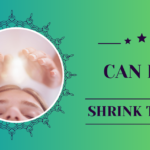Pranic Healing vs Reiki, 🧘Hello Yogis lets Dive into the world of energy healing with our comprehensive guide to Pranic Healing and Reiki at our Reiki Yoga School. Discover the unique powers of these practices and how they differ, helping you to heal from within.
Perfect for those embarking on a journey to holistic health, our course is designed to empower you with the knowledge needed to make an informed choice on your spiritual and healing path. Book now to begin your exploration with the experts at our Reiki Yoga School and find the pathway best suited for you!
A Primer on Pranic Healing and Reiki
Before we compare and contrast, it’s integral to understand each art in isolation. Both Pranic Healing and Reiki operate within the sphere of energy medicine, the idea that the body’s energy, or ‘life force,’ has a direct impact on our physical, mental, and emotional well-being.
Pranic Healing: Originating from the Philippines, Pranic Healing was developed by Grand Master Choa Kok Sui. The practice emphasizes the ability to manipulate and balance the body’s energy, known as prana, to achieve health. Techniques include scanning, cleansing, energizing, and stabilizing the body’s energy through simple yet powerful methods.
Reiki: In contrast, Reiki finds its roots in Japan, founded by Mikao Usui. The term ‘Reiki’ combines two Japanese words: ‘Rei’ meaning universal life and ‘Ki’ which is a synonym for Chi or Prana. Reiki is based on the belief that a practitioner can transfer universal energy through their palms to the patient to encourage physical and emotional healing.
Understanding Pranic Healing

Core Principles
Pranic Healing operates on the core principles that the body has the innate ability to repair itself when its energies are in balance. Imbalances in energy fields are the root of physical and psychological ailments. The principles guide practitioners to understand the importance of proper energy hygiene, such as not contaminating the patient’s energy field with their own, and to adopt ethical practices that involve no physical touch or invasive procedures.
Techniques and Methodologies
Pranic Healing utilizes a combination of scanning techniques to detect auric irregularities, ‘sweeping’ to remove blockages, and ‘energizing’ to revitalize areas of depletion. Techniques are taught in a systematic, step-by-step manner, focusing on the breath to energize the body.
Application in Holistic Health
Pranic Healing can be practiced on oneself or others. It is used to alleviate physical ailments, psychological disturbances, and can complement modern medical treatments. The practice is versatile and effective for many conditions, from minor ailments to chronic illnesses.
Exploring Reiki

History and Tradition
Reiki is rooted in ancient Eastern traditions, passed down through the generations, and rediscovered by Mikao Usui in the late 19th century. It has since evolved into several different lineages, each with their approaches and teachings, which add to the rich tapestry of Reiki history and application.
The Concept of Life Force Energy
At the heart of Reiki lies the belief in ‘life force energy,’ also known as ‘ki’ or ‘chi.’ The practice asserts that when this energy is low, we are more susceptible to illness, and when it is high, we are more capable of being happy and healthy. The aim of Reiki is to restore balance, thereby stimulating the body’s innate healing abilities.
Levels and Attunements
Reiki practitioners typically learn and progress through a series of levels, with each level providing a deeper connection to the life force energy and more potent healing abilities. ‘Attunements’ are a vital part of this progression, as they are believed to open the energy pathways, allowing the practitioner to channel higher levels of healing Reiki energies.
Healing Methodologies
Reiki healers use a series of hand positions, either starting from the top of the head or where the client is experiencing discomfort, to allow the energy to flow through the body. The process can lead to a deep sense of relaxation and a potential release of emotional and physical tension.
Differences in Methodologies

When observing Pranic Healing and Reiki side by side, several fundamental differences emerge in their approaches.
Touch vs No Touch: Pranic Healing involves no-touch energy manipulation, whereas Reiki utilizes the hands directly on the patient or with a slight hovering approach.
Scanning Techniques: Pranic Healing relies heavily on scanning the aura for energy irregularities, which is not a primary aspect of Reiki.
Energetic Communities: Both practices foster their communities and organizations, teaching unique methods and fostering lineages.
Major Difference between Pranic Healing vs Reiki
| Feature | Pranic Healing | Reiki |
|---|---|---|
| Origin | Developed by Master Choa Kok Sui in the early 1980s. | Originated in Japan in the early 20th century by Mikao Usui. |
| Touch | No physical touch; healing is performed through cleansing and energizing the aura. | Involves light physical touch or hands hovering close to the body. |
| Techniques | Utilizes a structured, step-by-step methodology that includes scanning, sweeping, and energizing. | Focuses on intuitively channeling energy through the hands to balance the body’s energy centers. |
| Focus | Aimed at removing blockages and cleansing the energy body before energizing it. | Concentrates on channeling universal life force energy to support holistic healing. |
| Learning Process | Often perceived as more technical, requiring study of energy anatomy and specific protocols. | Considered more intuitive, with an emphasis on attuning oneself to the Reiki energy. |
| Symbols | Does not use symbols in its practice. | Uses specific symbols that are believed to enhance the healing process. |
| Self-Healing | Encourages self-healing techniques as part of its practice. | Strong emphasis on self-healing as a foundation before healing others. |
| Attunements | Does not require attunements but focuses on learning techniques and principles. | Relies on attunements from a Reiki master to access different levels of energy. |
| Practitioner’s Role | Acts as a facilitator to remove dirty energy and replenish with fresh prana. | Serves as a channel to flow universal energy into the patient. |
| Cultural and Philosophical Background | Rooted in the traditions of Chinese Qi Gong, Hindu beliefs of prana, and theosophical concepts. | Based on Japanese spiritual practices and influenced by Buddhist teachings. |
Benefits and Drawbacks of Each Practice
The Merits of Pranic Healing
Pranic Healing is lauded for its structured approach and the ability to provide swift energy adjustments with tangible results. Its emphasis on no-touch healing also appeals to those seeking a method that respects personal space and comfort.
The Joys of Reiki
Reiki’s gentle, hands-on approach is often appreciated for its potential to provide deep relaxation and foster an immediate sense of calm. Its simplicity in approach can also make it an accessible healing modality for those new to energy work.
The Flip Side
Neither practice is without its potential drawbacks. Skeptics point to the lack of scientific evidence supporting the efficacy of energy medicine as a whole, while others may struggle to find credible practitioners within the often unregulated field.
Case Studies in Energy Healing
To contextualize the potential of these practices, it’s essential to leverage real-world examples of how Pranic Healing and Reiki have benefited individuals.
A Journey with Pranic Healing: A case study explores how Pranic Healing assisted an individual with chronic pain management, showcasing the practice’s ability to complement conventional medicine and offer relief.
The Reiki Experience: A storytelling of someone who found peace and a deep emotional release through Reiki, underscoring its role in mental health, alongside traditional therapies.
Choosing the Right Path for You

Ultimately, the decision between Pranic Healing and Reiki will be influenced by personal preference, the nature of the condition being treated, availability of practitioners, and the receptiveness of the individual to the unique elements of each practice.
Matching Your Nature: If you are a more tactile person, Reiki might resonate with you. However, if you prefer structured approaches and a more diagnostic path to healing, Pranic Healing could be your calling.
Support and Accessibility: Consider the local availability of practitioners and communities surrounding each practice. Support networks and availability can be crucial factors in long-term adoption and success.
Complementary or Standalone: Decide whether you are looking to integrate energy work as a complement to your existing wellness routine or seeking an exclusive path for healing.
Cultural and Personal Alignment: Evaluate how the philosophies and histories of each practice align with your individual beliefs and cultural background.
In Closing
The world of energy medicine is vast and yet intimately tied to the fundamental aspects of our existence. Both Pranic Healing and Reiki offer distinctive approaches to harnessing life force energy for health and wellness. By understanding their nuances and considering your personal needs, you can set forth on a path that not only has the potential to heal your body but also nourish your soul. Whether drawn to Pranic Healing’s precision or Reiki’s gentle touch, your journey into energy medicine promises to be one of self-discovery and transformation.
References and Further Reading
To continue your exploration, consult the following resources recommended for a deeper understanding of Pranic Healing, Reiki, and the field of energy medicine.
- Pranic Healing: A Guidebook on the Founder’s Teachings by Master Choa Kok Sui
- Reiki for Life by Penelope Quest
- The International Center for Reiki Training and The Institute for Inner Studies for accredited courses and information sessions.
- The Pranic Healing Institute for workshops, seminars, and book materials.
- Scientific journals and studies on energy healing practices for a more analytical view of their potential effects.
Conclusion
The exploration into the realms of Pranic Healing and Reiki unveils a fascinating landscape where traditional and energy medicine intertwine, offering paths toward healing and wellness that transcend conventional medical treatments. Both practices, with their distinct methodologies, philosophies, and outcomes, cater to a wide array of physical, emotional, and spiritual needs, underscoring the importance of holistic approaches to health. While the scientific community continues to debate the measurable efficacy of these practices, countless personal testimonies speak to their profound impact on individuals’ lives. In the pursuit of health and well-being, Pranic Healing and Reiki stand as testimonies to the human capacity for healing and the complex, yet beautiful, nature of our existence. Whether one decides to walk the path of the gentle, nurturing touch of Reiki or the precise, structured energy work of Pranic Healing, the journey is sure to be deeply personal and potentially transformative.
Frequently Asked Questions (FAQs)
What are the primary differences between Pranic Healing and Reiki?
The main differences lie in their methods and approach. Pranic Healing is a no-touch, energy-cleansing method that involves scanning the body’s aura for imbalances and cleansing them, whereas Reiki involves hands-on or near-the-body techniques to channel energy and promote healing.
Can Pranic Healing or Reiki replace conventional medical treatments?
No, both Pranic Healing and Reiki should be viewed as complementary therapies. They can be used alongside conventional medicine to assist in healing and recovery but should not replace medical treatment for serious conditions.
How do I find a credible practitioner?
Look for practitioners with certifications from reputable organizations. Referrals from trusted sources or reviews from previous clients can also guide you. Both the International Center for Reiki Training and The Institute for Inner Studies offer directories of certified practitioners.
What can I expect during a healing session?
Sessions typically last between 45 to 90 minutes. In Pranic Healing, the practitioner will assess your energy field and perform cleansing and energizing techniques without physical touch. In a Reiki session, the practitioner may lightly touch or hover their hands over your body, starting from your head to your feet, focusing on areas that need energy healing.
Are there any side effects to these healing practices?
Both practices are generally considered safe and non-invasive. However, some individuals may experience temporary emotional releases or physical sensations, such as warmth or tingling, during or after sessions. It’s important to discuss any concerns with your practitioner beforehand.







